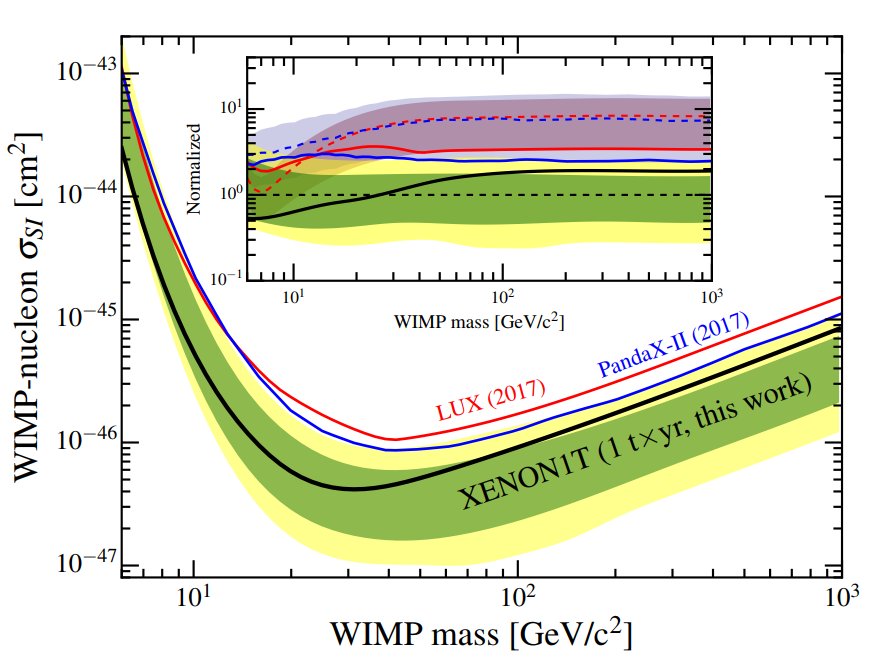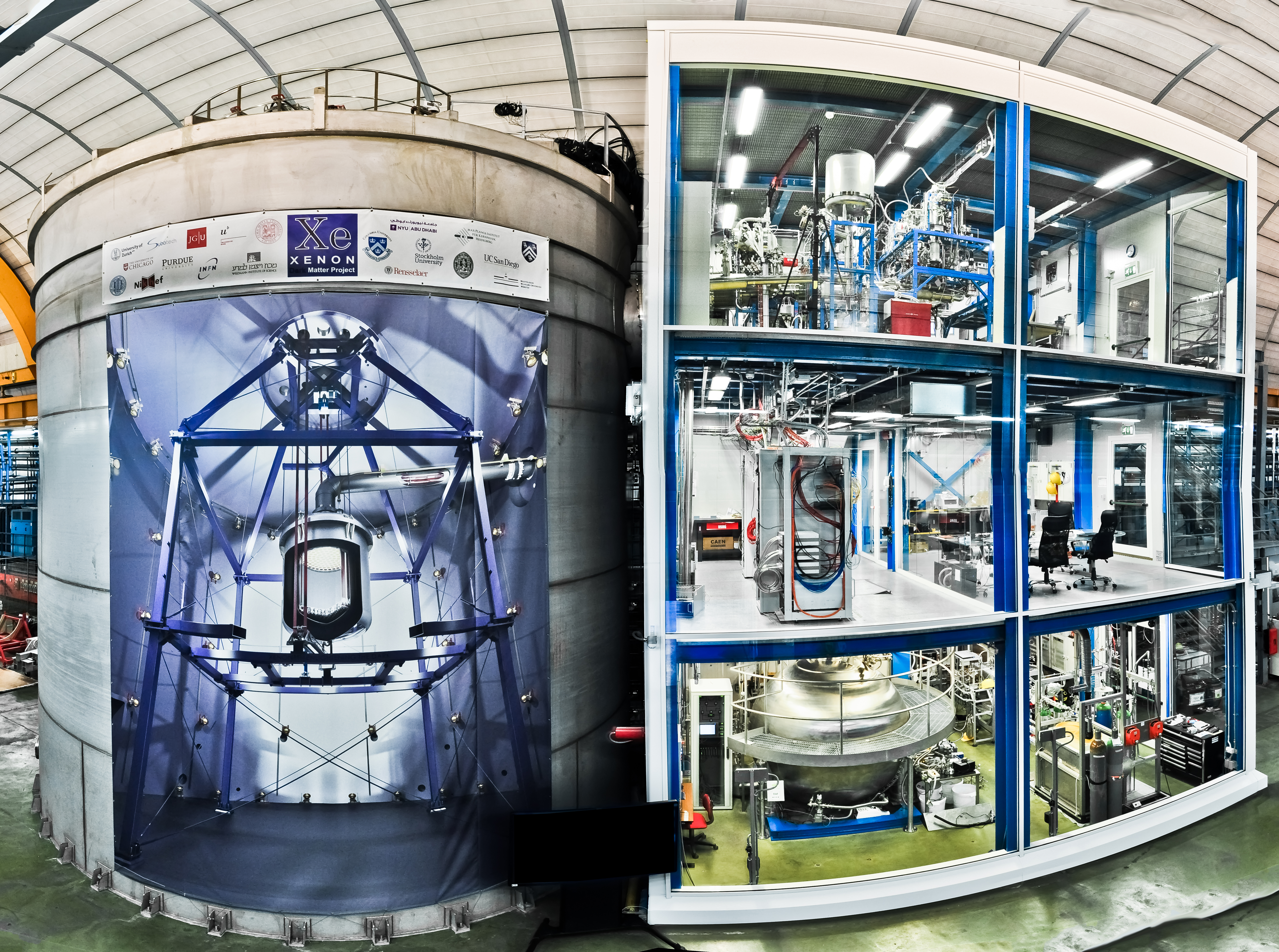The international collaboration of more than 165 researchers from 27 institutions, has successfully operated XENON1T, collecting an unprecedentedly large exposure of about 1 tonne x year with a 3D imaging liquid xenon time projection chamber. The data are consistent with the expectation from background, and place the most stringent limit on spin-independent interactions of WIMPs with ordinary matter for a WIMP mass higher than 6 GeV/c2. The sensitivity achieved with XENON1T is almost four orders of magnitude better than that of XENON10, the first detector of the XENON Dark Matter project, which has been hosted at LNGS since 2005. Steadily increasing the fiducial target mass from the initial 5 kg to the current 1300 kg, while simultaneously decreasing the background rate by a factor 5000, the XENON collaboration has continued to be at the forefront of Dark Matter direct detection, probing deeper into the WIMP parameter space.

- Limits on WIMP interactions, derived from one year of XENON1T data. The inset compares our limit and sensitivity with the limit and sensitivities of previous experiments (figure from http://www.xenon1t.org/).
WIMPs are a class of Dark Matter candidates which are being frantically searched with experiments at the Large Hadron Collider, in space, and on Earth. Even though about a billion WIMPs are expected to cross a surface of one square meter per second on Earth, they are extremely difficult to detect. Results from XENON1T show that WIMPs, if they indeed comprise the Dark Matter in our galaxy, will result in a rare signal, so rare that even the largest detector built so far cannot see it directly. XENON1T is a cylindrical detector of approximately one meter height and diameter, filled with liquid xenon at -95°C, with a density three times that of water. In XENON1T, the signature of a WIMP interaction with xenon atoms is a tiny flash of scintillation light and a handful of ionization electrons, which themselves are turned into flashes of light. Both light signals are simultaneously recorded with ultra-sensitive photodetectors, giving the energy and 3D spatial information on an event-by-event basis.
In developing this unique type of detector to search for a rare WIMP signal, many challenges had to be overcome; first and foremost the reduction of the overwhelmingly large background from many sources, from radioactivity to cosmic rays. Today, XENON1T is the largest Dark Matter experiment with the lowest background ever measured, counting a mere 630 events in one year and one tonne of xenon in the energy region of interest for a WIMP search. The search results, submitted to Physical Review Letters, are based on 1300 kg out of the total 2000 kg active xenon target and 279 days of data, making it the first WIMP search with a noble liquid target exposure of 1.0 tonne x year. Only two background events were expected in the innermost, cleanest region of the detector, but none were detected, setting the most stringent limit on WIMPs with masses above 6 GeV/c2 to date. XENON1T continues to acquire high quality data and the search will continue until it will be upgraded with a larger mass detector, being developed by the collaboration. With another factor of four increase in fiducial target mass, and ten times less background rate, XENONnT will be ready in 2019 for a new exploration of particle Dark Matter at a level of sensitivity nobody imagined when the project started in 2002.
The Swiss group at the University of Zurich has leading contribution to the hardware and the data analysis of the XENON1T project. The group is (co)responsible for the time projection chamber, for the 3-inch photosensor characterisation in liquid xenon at UZH and the photosensor arrays, for the design, test and production of the low-background voltage-dividers and the signal transfer between TPC and DAQ, on the xenon side. Furthermore, the group is in charge of the design and construction of the light calibration system and weekly photosensor calibrations and monitoring of the stability of the photosensor’s performance in time, for Monte Carlo simulations for position reconstruction and electric field simulation, as well as for material screening with high-purity germanium detector (Gator) at LNGS.

-
XENON1T installation in the underground hall of Laboratori Nazionali del Gran Sasso. The three story building houses various auxiliary systems. The cryostat containing the LXeTPC is located inside the large water tank next to the building. Photo by Roberto Corrieri and Patrick De Perio.
Literature
preprint of the publication submitted to Physical Review Letters https://arxiv.org/abs/1805.12562
Additional information
XENON1T experiment www.xenon1t.org
Laboratori Nazionali del Gran Sasso (LNGS) www.lngs.infn.it
Short movie on the construction of XENON1T at LNGS:
https://www.youtube.com/watch?v=9YMGZAKv11Q
https://www.interactions.org/press-release/higgs-boson-reveals-its-affinity-top-quark
Contact:
Prof. Laura Baudis
University of Zurich
Chair of the XENON collaboration board
laura.baudis@uzh.ch
